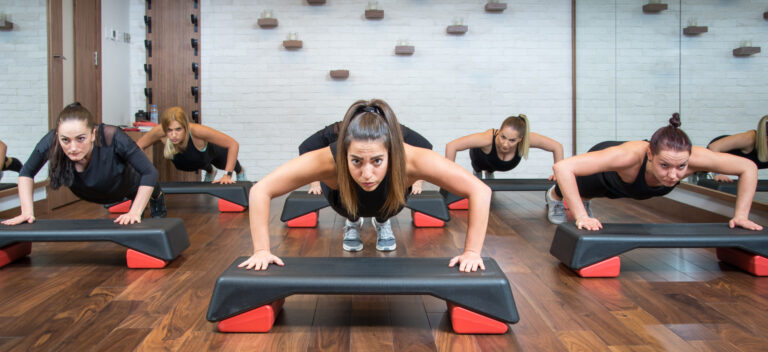Tracking Your Fitness Progress: Tools and Tips
Fitness Progress: In the journey to achieving fitness goals, tracking progress is a crucial component. It provides valuable insights, helps you stay motivated, and allows for adjustments to ensure continued success. With the right tools and techniques, tracking your fitness progress becomes not just manageable, but also enjoyable. Here’s a comprehensive guide to help you navigate this essential aspect of your fitness journey. (Fitness Progress)
Why Track Your Fitness Progress?
Before diving into tools and tips, it’s important to understand why tracking your fitness progress is so beneficial:
- Motivation Boost: Seeing tangible results can be incredibly motivating. Whether it’s weight loss, muscle gain, or improved endurance, progress keeps you engaged and excited about your goals.
- Accountability: Regular tracking helps you stay accountable to your fitness routine. When you record your workouts and progress, you’re more likely to stick to your plan.
- Identify Patterns: Tracking can help identify patterns in your performance, such as which workouts yield the best results or when you’re most consistent.
- Adjustments: It provides the data needed to make informed adjustments to your routine. If you’re not seeing results, you can tweak your workouts or diet based on your tracking insights.
- Celebrate Milestones: Recognizing and celebrating your achievements can enhance your sense of accomplishment and keep you motivated.
Essential Tools for Tracking Fitness Progress
- Fitness Trackers and Smartwatches
Fitness trackers and smartwatches have become indispensable tools for fitness enthusiasts. They offer a range of features that can track various metrics, including:
- Steps Taken: Most fitness trackers measure daily steps, which can help you ensure you’re meeting your activity goals.
- Heart Rate Monitoring: Many devices provide continuous heart rate monitoring, allowing you to gauge your workout intensity and cardiovascular health.
- Sleep Tracking: Good sleep is crucial for recovery, and some devices track sleep patterns to provide insights into your rest quality.
- Calorie Burn: Fitness trackers estimate calories burned based on your activity levels and metabolic rate.
Popular Brands:
- Fitbit
- Apple Watch
- Garmin
- WHOOP
- Mobile Apps
Fitness apps offer a convenient way to track various aspects of your fitness journey. They often come with additional features like workout plans, nutritional guidance, and community support. Key functionalities to look for include:
- Workout Logs: Record your exercises, sets, reps, and weights.
- Progress Photos: Take and store progress photos to visually track changes.
- Nutrition Tracking: Log your food intake and monitor macronutrients and micronutrients.
- Goal Setting: Set and track goals for different fitness metrics.

Top Fitness Apps:
- Wearable Technology
Beyond fitness trackers and smartwatches, there are other types of wearable technology designed for specific fitness needs:
- Heart Rate Monitors: Chest straps or armbands that provide more accurate heart rate data.
- GPS Devices: For tracking distance and route in activities like running and cycling.
- Smart Clothing: Fitness apparel embedded with sensors to monitor various metrics, such as muscle activity and posture.
Examples:
- Polar H10 Heart Rate Monitor
- Garmin HRM-Pro
- Sensoria Fitness Socks
- Fitness Journals and Planners
For those who prefer a more traditional approach, a fitness journal or planner can be highly effective. These can be used to manually record workouts, nutrition, and progress. Key advantages include:
- Customization: Tailor your journal to fit your specific needs and goals.
- Reflection: Allows for personal reflections and notes on what’s working or needs improvement.
- Goal Tracking: Easy to track and review your progress over time.
Popular Options:
- The Fitbook
- Gym Workout Journal
- My Workout Journal
Tips for Effective Tracking
- Set Clear Goals
Before starting to track, define clear and achievable goals. Whether you’re aiming to lose weight, build muscle, or improve endurance, having specific goals will guide your tracking efforts and help you stay focused.
- Be Consistent
Consistency is key in tracking progress. Make it a habit to log your workouts, nutrition, and other relevant data regularly. Set reminders if needed to ensure you stay on track.
- Use Multiple Metrics
Relying on a single metric might not give you a complete picture. Combine various metrics such as weight, body measurements, performance stats, and overall well-being to get a comprehensive view of your progress.
- Review and Analyze Data
Regularly review and analyze your data to identify trends and patterns. Look for improvements, areas of stagnation, or potential issues. This analysis will help you make informed decisions about adjusting your fitness routine.
- Adjust As Needed
Based on your analysis, be prepared to adjust your fitness plan. If you’re not seeing the results you want, consider changing your workouts, tweaking your diet, or incorporating new strategies.
- Celebrate Successes
Don’t forget to celebrate your milestones and successes. Recognizing your achievements, no matter how small, will keep you motivated and encouraged to continue your fitness journey. (Fitness Progress)
Impact of Mental Health on Physical Fitness
Common Challenges and How to Overcome Them
- Inaccuracy of Data
Sometimes, fitness trackers and apps may provide inaccurate data. To overcome this, use multiple sources of information and focus on trends rather than exact numbers. Cross-reference data with how you feel and perform. (Fitness Progress)
- Overwhelming Amount of Data
With so much data available, it can be overwhelming. Focus on the key metrics that align with your goals and avoid getting bogged down by every piece of data.
- Consistency Issues
(Fitness Progress) Maintaining consistency in tracking can be challenging. Set a regular schedule for logging data and integrate tracking into your daily routine. Consider using reminders or alerts to help you stay on track.
Conclusion
Tracking your fitness progress is an invaluable practice that can significantly enhance your fitness journey. By using the right tools and following effective tracking tips, you can gain insights into your performance, stay motivated, and make informed decisions about your fitness routine. Whether you prefer high-tech gadgets or traditional journals, the key is to find a method that works for you and stay consistent in your efforts. Embrace the process, celebrate your achievements, and enjoy the journey towards reaching your fitness goals.








One Comment